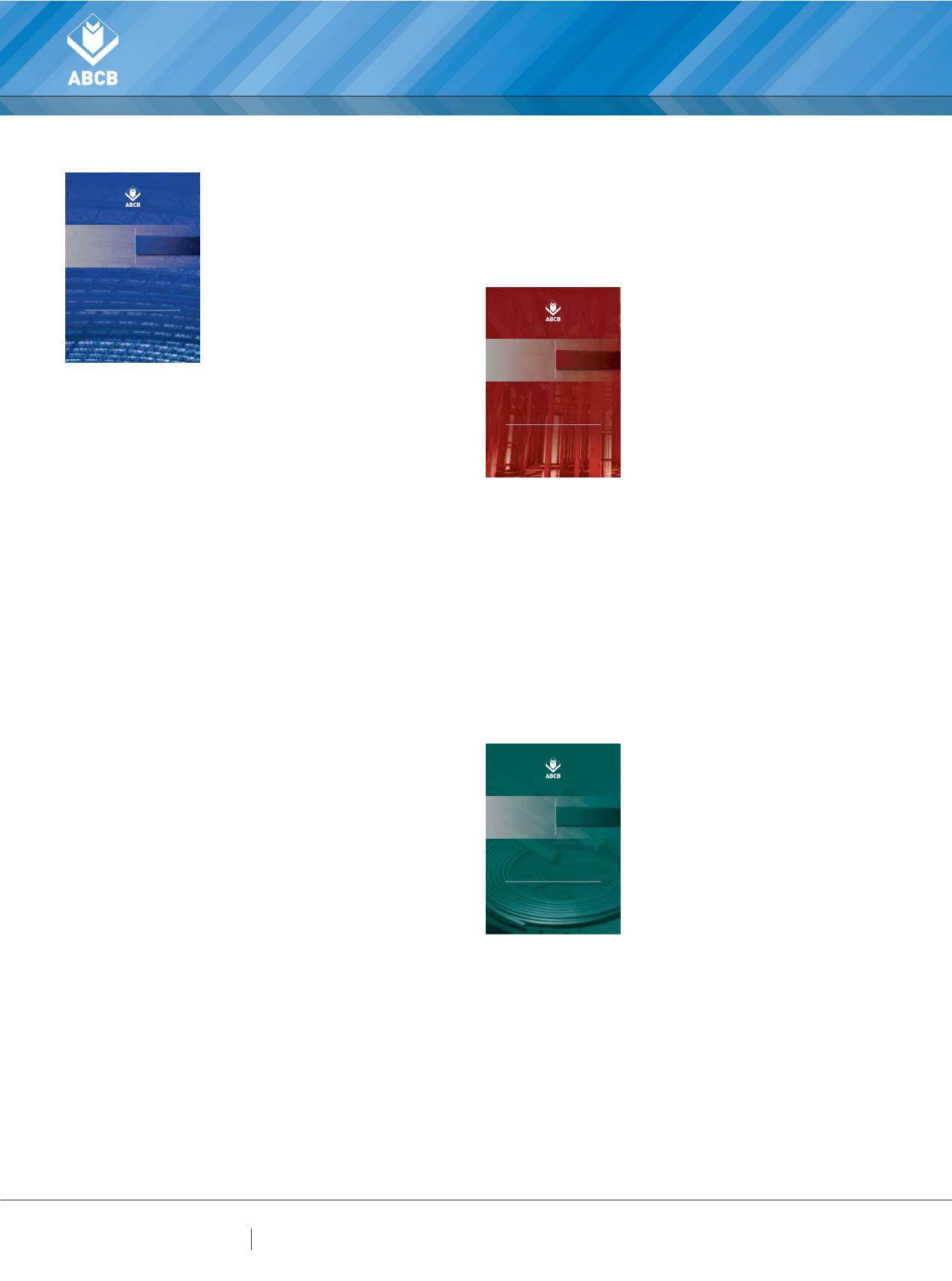

4 8
PLUMBING CONNECTION
WINTER 2016
CHANGES AFFECTING VOLUME ONE
In addition to the changes listed
above which affect Volumes One and
Two, there are a number of changes
specific to Volume One, including the
following:
EFFECTIVE HEIGHT
Clarification added to the definition
of effective height. The determination
of the lowest storey providing direct egress to a road or
open space has always been subjective. The defined term
now refers to the determination method used to identify
the lowest storey included in a calculation of rise in storeys.
This simplifies the calculation method and aligns the two
calculation methods. Identifying the highest storey remains
the same.
TIMBER MID-RISE BUILDINGS
New provisions have been included to permit timber mid-
rise buildings. Buildings which are Class 2, 3 or 5, sprinkler
protected and not more than 25 m effective height can be built
from timber provided the new Deemed-to-Satisfy Provisions
are followed. This means that timber buildings which were
limited to three storeys can potentially be built to eight
storeys.
GROUP NUMBER DETERMINATION
The group number determination for the fire hazard
property provisions now refers to a new referenced standard,
AS 5637.1. The new standard contains a process to determine
the most appropriate test to undertake for a certain product.
CARPARKS
The concession under C3.1 to exempt a vehicle ramp
opening to comply with the protection of openings provisions
of the Part has been amended. The concession now only
applies if the connecting floors comply as a single fire
compartment for the purpose of other Deemed-to-Satisfy
Provisions in Section C, D and E. This may affect provisions
such as E1.5 -Sprinklers.
VISIBILITY IN AN EMERGENCY
The Quantification of Performance project recognised
that EP4.1 was potentially preventing innovation by limiting
visibility in an emergency to that provided by lighting only.
Therefore ‘lighting’ has been replaced with ‘visibility’ to enable
innovation through alternative systems.
FARM BUILDINGS AND FARM SHEDS
Provisions for farm buildings and farm sheds have been
introduced in a new Part – Part H3. The provisions provide a
number of concessions to the Deemed-to-Satisfy Provision
in Sections C, D, E and F. The new Part acknowledges that
certain farm buildings may require additional levels of safety
than a Class 10a building, however may not require the level of
stringency of a Class 7 or 8 building.
CHANGES AFFECTING VOLUME TWO
In addition to the changes listed
above which affect Volumes One and
Two, there are a number of changes
specific to Volume Two, including the
following:
DWELLING ABOVE A NON-
APPURTENANT CLASS 10A PRIVATE
GARAGE
Prior to NCC 2016, Volume Two did
not have specific fire-separation provisions where a private
garage was located below a non-appurtenant dwelling. A new
provision has been included to require fire-separation for the
floor separating the non-appurtenant dwelling and private
garage.
CLASS 10A SMOKE ALARMS
Where a smoke alarm is installed in a Class 10a private
garage and is likely to cause spurious signals (false alarms)
an additional option has been included to allow any other
alarm deemed suitable in accordance with AS 1670.1 provided
smoke alarms are installed elsewhere in the Class 1a building.
This option is consistent with similar provisions in Volume One.
CHANGES AFFECTING VOLUME
THREE
PCA ANDWATERMARK
For 2016, there are two major
changes to Volume Three: these
are the restructuring of Parts A2
and G1 to implement the improved
WaterMark Certification Scheme;
and the adoption of the 2015 editions
of AS/NZS 3500 Parts 1 to 4 within
the PCA Deemed-to-Satisfy Provisions.
PARTS A2 AND G1 RESTRUCTURED
The improved WaterMark Certification Scheme —
supported by the Building Ministers Forum in July 2015 —
will, among other things, create a single level scheme and
consolidate the myriad scheme administrative documents
into a single source, within the ABCB website. For the PCA,
this means that Part A2 now includes at A2.1 a delineation
between which products require WaterMark certification
and which products are excluded, and at A2.2 separate
evidence of suitability requirements for included and
excluded products.
BuildingCode ofAustralia
Class 2 toClass 9Buildings
VOLUME ONE
NATIONAL
CONSTRUCTION
CODE
2016
BuildingCode ofAustralia
Class 1 andClass 10Buildings
VOLUME TWO
2016
NATIONAL
CONSTRUCTION
CODE
PlumbingCode ofAustralia
VOLUME THREE
2016
NATIONAL
CONSTRUCTION
CODE
















